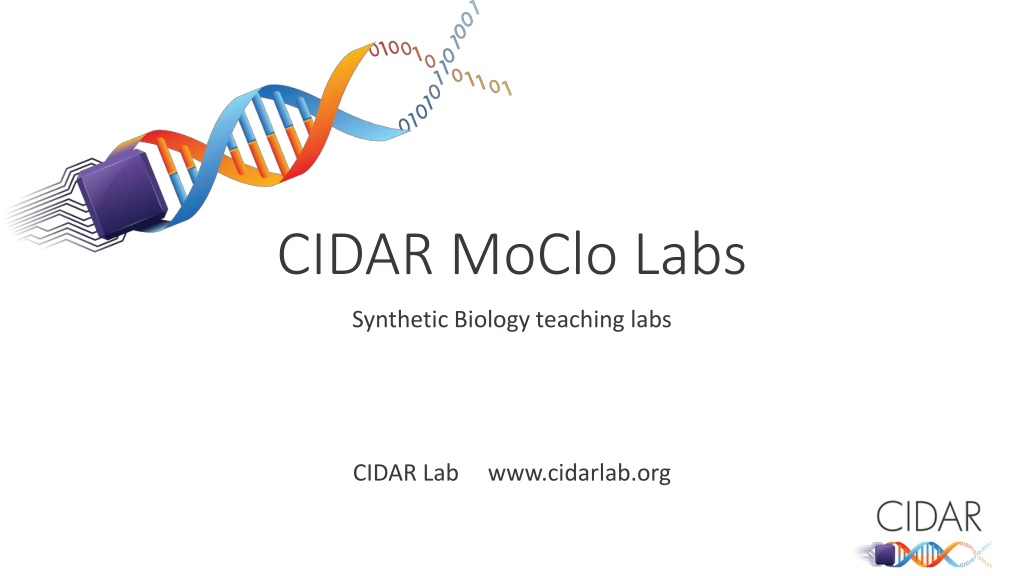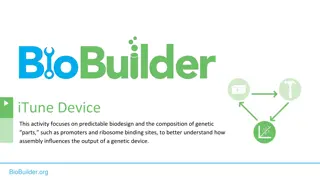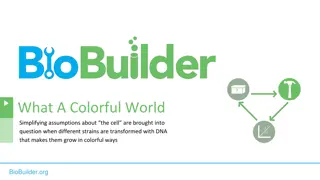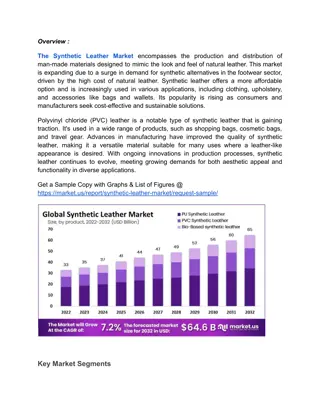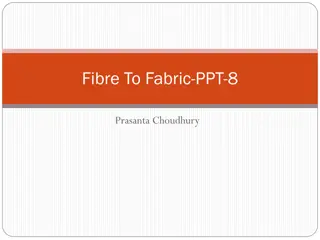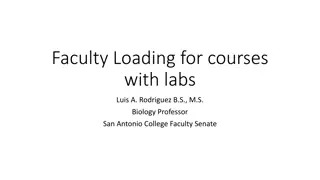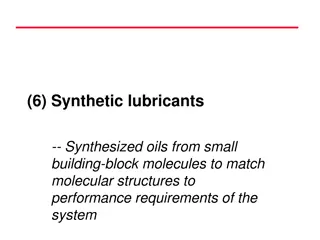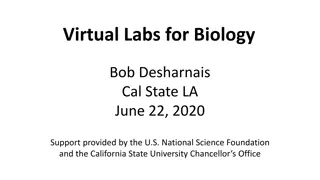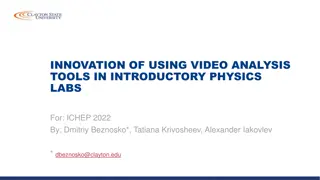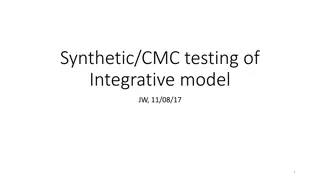Understanding CIDAR MoClo Labs in Synthetic Biology Teaching
In CIDAR MoClo Labs, students learn DNA engineering concepts, construction of plasmids, and analysis of fluorescent data. Background knowledge of DNA, proteins, bacterial plasmids, and the LacZ method is required. Skills include pipetting, DNA measurement, bacterial transformation, and plate reader usage. The lab utilizes the CIDAR MoClo assembly standard for rapid combinatorial design, with interchangeable DNA parts assembled using fusion sites. Plasmids from the CIDAR MoClo Library are essential for experiments. Traditional cloning methods take days, but MoClo allows single-reaction plasmid assembly in a modular fashion. Students gain hands-on experience in DNA manipulation and library construction. Knowledge of synthetic biology concepts and tools enhances students' ability to design and engineer biological systems.
Download Presentation

Please find below an Image/Link to download the presentation.
The content on the website is provided AS IS for your information and personal use only. It may not be sold, licensed, or shared on other websites without obtaining consent from the author. Download presentation by click this link. If you encounter any issues during the download, it is possible that the publisher has removed the file from their server.
E N D
Presentation Transcript
CIDAR MoClo Labs Synthetic Biology teaching labs CIDAR Lab www.cidarlab.org
Background knowledge required Basic understanding of DNA, proteins, expression, bacterial plasmids LacZ blue/white selection method Concept of restriction enzymes, ligase Helpful but not required: CIDAR MoClo: Improved MoClo Assembly Standard and New E. coli Part Library Enable Rapid Combinatorial Design for Synthetic and Traditional Biology ACS Synthetic Biology (2015) http://pubs.acs.org/doi/abs/10.1021/acssynbio.5b00124 Various materials at www.cidarlab.org/moclo
Skills learned / used in this lab Not taught directly in this module but needed for lab: Pipetting Measuring DNA concentration Transformation and plating bacteria Use of plate reader to measure concentrations Taught in this lab DNA engineering concept Construction of plasmids using multipart DNA assembly standard Building plasmid libraries Analyze fluorescent data
Plasmids needed - CIDAR MoClo Library (CML) Plasmid Name (96-well Plate Location) J23102_AB (CML-A5) J23102_EB (CML-A6) J23106_AB (CML-B1) J23116_AB (CML-B9) BCD2_BC (CML-D9) E0040m_CD (CML-E5) E1010m_CD (CML-E6) eBFP2_CD (CML-E7) B0015_DE (CML-E8) B0015_DF (CML-E9) DVA_AF (CML-F2) DVK_AE (CML-H4) DVK_EF (CML-H6)
DNA as interchangeable parts Promoter Promoter Coding sequence Terminator Ribosome binding site (RBS) Ribosome binding site Coding sequence (CDS) Synthetic Biology Open Language Terminator Plasmid Plasmid 5 http://sbolstandard.org/
CIDAR MoClo Assembly Standard Traditional cloning methods take 6+ days to make a plasmid from 4 parts MoClo can do this in a single reaction MoClo is a Type IIS DNA assembly protocol Type IIS restriction enzymes recognize non-palindromic sequences Type IIS restriction enzymes cut outside their recognition sequence The cut site can be any sequence, allowing for engineered fusion sites MoClo uses defined fusion sites to assemble DNA in a modular fashion Interchangeable parts Assembly relies on fusion sites, 4 bps overhangs caused by Type IIS enzymes Each part type is added in equimolar concentration Each this makes parts interchangeable; any CDS can swapped for any other, for example All promoters end in B site ( TACT ) All RBS parts start with B and end with C ( AATG ) All CDS parts start with C and end with a D ( AGGT ) All terminator parts start with a D site ( GCTT )
CIDAR MoClo Assembly Standard / Transcription Unit TU 7
Lab 1 Build a fluorescent reporter plasmid Combine 4 MoClo parts in 1 destination vector (MC -1) Promoter J23102_AB RBS BCD_BC CDS E1010m_CD (Red Fluorescent Protein, RFP) Terminator B0015_DE Vector DVK_AE Plate on LB + IPTG/X-gal, grow overnight Count colonies, note colors Calculate assembly efficiency Notes: Measure input plasmid concentrations Use excel sheet to calculate volumes Pipette carefully
Lab 1 Calculation File MC 1 - pJ02B2Rm_AE J23102_AB BCD2_BC E1010m_CD B0015_DE DVK_AE FS Sample J23102 BCD2 E1010m B0015 DVK Location Part Size Vector Size CML-A5 CML-D9 CML-E6 CML-E8 CML-H4 Conc (ng/ul) Size (bp) ng DNA (30 fmol) uL to add Input Conc Input Conc Input Conc Input Conc Input Conc uL to add AB BC CD DE AE 35 88 681 129 496 2108 2108 2108 2108 2235 2143 2196 2789 2237 2731 42.43 43.48 55.22 44.29 54.07 Other reagents Stock Conc Working Conc Ligase buffer 10x T4 Ligase 40 U/uL BsaI 5 U/uL Water -- 1x 20 U/rxn 10 U/rxn -- Total 2.00 0.50 1.00 16.50 20.00 Note: L to add will auto calculate in Excel when Conc is filled in.
Lab 2 Multiplex MoClo MoClo parts are interchangeable Multiple of the same part type can be added to a reaction to create multiple plasmids at once Combine parts as described in the calculations sheet MMC 1 pJ02B2X_EF MMC 2 pJXB2Rm_AE MMC 3 pJXB2X_AE X indicates a multiplexed part. Pay attention to the fusion sites. Select colonies and measure fluorescence and OD using a plate reader Analyze data, describe different populations, calculate efficiencies and assembly ratios. Can you identify groups with similar amounts of fluorescence? Notes:
Lab 2 Calculation Files MMC1 - pJ02B2X_EF FS J23102_EB EB BCD2_BC BC eBFP2_CD CD E0040m_CD CD E1010m_CD CD B0015_DF DF DVK_EF EF Sample J23102 BCD2 eBFP2 E0040m E1010m B0015 DVK Location Part Size Vector Size CML-A6 CML-D9 CML-E7 CML-E5 CML-E6 CML-E9 CML-H6 Conc (ng/ul) Size (bp) ng DNA (30 fmol) uL to add Input Conc Input Conc Input Conc Input Conc Input Conc Input Conc Input Conc uL to add 35 88 2108 2108 2108 2108 2108 2108 2235 2143 2196 2900 2828 2789 2237 2731 42.43 43.48 19.14 18.66 18.41 44.29 54.07 792 720 681 129 496 Other reagents Stock Conc Working Conc Ligase buffer 10x T4 Ligase 40 U/uL BsaI 5 U/uL Water -- 1x 20 U/rxn 10 U/rxn -- Total 2.00 0.50 1.00 16.50 20.00 MMC2 - pJXB2Rm_AE J23102_AB J23106_AB J23116_AB BCD2_BC E1010m_CD B0015_DE DVK_AE FS Sample J23102 J23106 J23116 BCD2 E1010m B0015 DVK Location Part Size Vector Size CML-A5 CML-B1 CML-B9 CML-D9 CML-E6 CML-E8 CML-H4 Conc (ng/ul) Size (bp) ng DNA (30 fmol) uL to add Input Conc Input Conc Input Conc Input Conc Input Conc Input Conc Input Conc uL to add AB AB AB BC CD DE AE 35 35 35 88 2108 2108 2108 2108 2108 2108 2235 2143 2143 2143 2196 2789 2237 2731 14.14 14.14 14.14 43.48 55.22 44.29 54.07 681 129 496 Other reagents Stock Conc Working Conc Ligase buffer 10x T4 Ligase 40 U/uL BsaI 5 U/uL Water -- 1x 20 U/rxn 10 U/rxn -- Total 2.00 0.50 1.00 16.50 20.00 Note: L to add will auto calculate in Excel when Conc is filled in.
Lab 2 Calculation Files MMC3 - pJXB2X_AE J23102_AB J23106_AB J23116_AB BCD2_BC eBFP2_CD E0040m_CD E1010m_CD B0015_DE DVK_AE FS Sample J23102 J23106 J23116 BCD2 eBFP2 E0040m E1010m B0015 DVK Location Part Size Vector Size CML-A5 CML-B1 CML-B9 CML-D9 CML-E7 CML-E5 CML-E6 CML-E8 CML-H4 Conc (ng/ul) Size (bp) ng DNA (30 fmol) uL to add Input Conc Input Conc Input Conc Input Conc Input Conc Input Conc Input Conc Input Conc Input Conc uL to add AB AB AB BC CD CD CD DE AE 35 35 35 88 2108 2108 2108 2108 2108 2108 2108 2108 2235 2143 2143 2143 2196 2900 2828 2789 2237 2731 14.14 14.14 14.14 43.48 19.14 18.66 18.41 44.29 54.07 792 720 681 129 496 Other reagents Stock Conc Working Conc Ligase buffer 10x T4 Ligase 40 U/uL BsaI 5 U/uL Water -- 1x 20 U/rxn 10 U/rxn -- Total 2.00 0.50 1.00 16.50 20.00 Note: L to add will auto calculate in Excel when Conc is filled in.
Lab 3 Create a multipart device Combine 2 Transcription Units A strongly red pJXB2Rm_AE from MMC 2 A strongly green pJXB2X_EF from MMC 1 Vector DVA_AF Notes: Measure concentrations Use excel sheet to calculate volumes Pipette carefully Measure expression on a plate reader. Compare to the expression of each individual transcription unit from Lab 2. Alternately, make multiple Devices using different plasmids from the MMC reactions to visualize the various expression combinations possible.
Lab 3 Calculation File MC 2 - pJ02B2Rm:J02B2Gm_AF pJ02B2Rm_AE pJ02B2Gm_EF DVA_AF FS Sample Location Part Size Vector Size CML-H2 CML-H1 CML-F2 Conc (ng/ul) Size (bp) ng DNA (30 fmol) uL to add Input Conc Input Conc Input Conc uL to add AE EF AF pJ02B2Rm pJ02B2Gm DVA 941 984 498 2235 2235 2108 3176 3219 2606 62.88 63.74 51.60 Other reagents Stock Conc Working Conc Ligase buffer 10x T4 Ligase 40 U/uL BbsI 5 U/uL Water -- 1x 20 U/rxn 10 U/rxn -- Total 2.00 0.50 1.00 16.50 20.00 Note: L to add will auto calculate in Excel when Conc is filled in.
Additional information The following slides contain pictures and information which may be useful.
Known troubleshooting Minipreps must be high quality (clean prep, correct plasmid) Inaccurate measuring/pipetting results in low efficiency cloning If few colonies arise, white colonies are likely artifacts (incorrect clones) With poor quality reactions (bad preps, wrong preps, part missing from reaction) partially assembled plasmids result in which the LacZ has been removed but none or only some of the parts have been inserted. Plates with mostly or all blue colonies indicate a failed reaction. Restriction enzyme may have been incorrect or forgotten. Too much ligase may inhibit rearrangement of parts Lots of white and blue: Too much Destination Vector added to reaction. NOTE: Always plate controls to aid in troubleshooting Plate excess competent cells on antibiotic media as negative control
Combinatorial assembly with multiplex MoClo Create a library in a single tube Transcription factor / binding site characterization Mutant library screening Expression tuning of genetic devices Multiplex basic parts = TU library Multiplex TUs = Device library 17
Promoters & RBS parts in CIDAR MoClo Library CIDAR MoClo Library: Promoter and RBS strength 25000 20000 Fluorescence (MEFL) 15000 10000 5000 0 BCD2 B0034m BCD12 B0032m BCD8 B0033m J23100 J23102 J23106 J23107 J23116 J23103
Plasmid nomenclature Naming convention for all CIDAR MoClo plasmids Unique ID Descriptive 19
